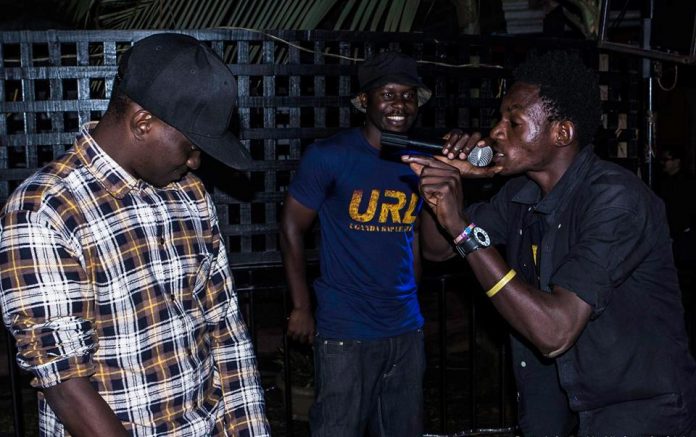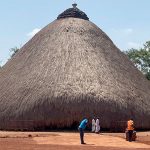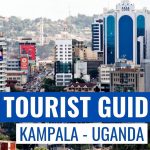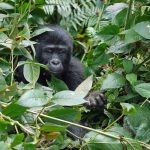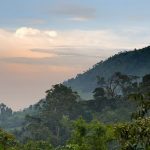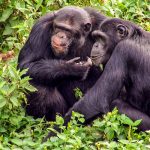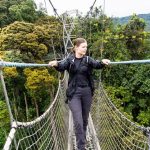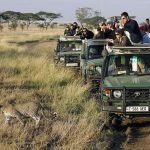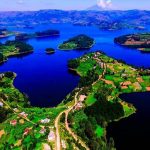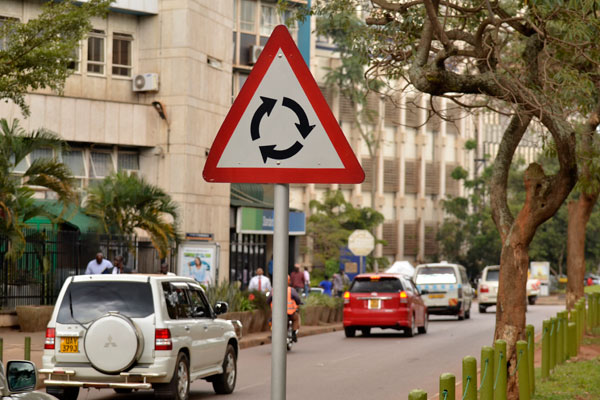When I heard Luganda rap for the first time, I knew I had no limits,” says hip hop artist Abramz confidently. He is one of the rappers who battled for a stage during the 1990s in Kampala. “You went to a show to perform your unrecorded rap. But when somebody did an American hit, nobody wanted to listen to you anymore.” Today, the Pearl of Africa is home to a unique, multilingual rap scene that is pushing urban borders. Three UG rappers reflect on the identity, language and realness of Ugandan hip hop.
American Cassettes
It is busy as usual in the Ethiopian bar in Kabalagala where I am meeting Abramz (33). Hawking children approach our table to fist bump him. “The banana crew,” he smiles. Abraham Tyeka accounts for half of the hip hop duo Sylvester & Abramz and reaches youth all over Uganda with his organization, Breakdance Project Uganda. Orphaned at an early age and raised by family members, he developed a particular interest in the cassettes of MC Hammer and Vanilla Ice, phonetically rapping to their lyrics. Until he heard Philly Bongole Lutaaya, Uganda’s legendary musician.

Hip-Hop Activist and B-boy Abramz (right). © Nomadic Wax – Abramz.com
“I think Philly’s cassette came around 1989,” he recalls. “He was rapping about respect of a woman. For me it relates to reality. But also to see that he was expressing that in Luganda made me realize that I had no limits.”
Exposed to underground rap from Big Daddy Kane and RUN-D.M.C., he discovered that he as well, with unresolved issues in the head and the heart, could speak his mind.
Since the 1990s, hip hop has become the texture of youth cultures in many African cities. Young Africans have enthusiastically embraced, transformed and appropriated the genre, and easily weave local specificities into their lyrics, instrumentals and style. Dr. Samy Alim, Director of the Institute for Diversity in the Arts, describes how African rappers experiment with style, dress and language, and as such demarcate themselves within the global hip hop Nation. An intricate component of hip hop is language: Senegalese rap in Wolof, Kenyan hip hop and Tanzanian Bongo Flava in Swahili, Igbo rap in Naija (Nigerian) style result in unprecedented mixes that come with very personal – and collective – signatures.
Criticism On Air
A few weeks before the presidential elections, Survivor (42) is sipping his macchiato at the other end of the table, his dreadlocks tucked in a crocheted hat. National politics are a circus to him, although the conscious hip hop veteran cannot detach himself entirely from it. He announces that he will upload his new clip on Youtube later that night, when the Internet is faster. Today, Honorable Muuki has over 2000 views. For non-Luganda speakers, subtitles come in handy.

Ancien Survivor indicates decades voice to the underground hip-hop circuit in Kampala. © Emilie Dewitte
“I am the greedy Bassajja kulya at your service (…) I put on a show after every five years/ spending my money to buy votes/ I am as corrupt as they come, check my credentials/ I use every opportunity to embezzle public funds/ I destroy every institution under my care/ corruption is my domain.”
I ask him if he risks getting arrested over this creative prank, but he seems undisturbed. Censoring Uganda musicians has become a hazardous task: the furious rise of mobile phones, Internet, private radio and TV channels and the popularity of online platforms like ReverbNation and Soundcloud has caused a total landslide in the distribution of hip hop music. Songs “move” with the speed of data bundles and new formats constantly appear. A trending hip hop news show on NTV, for example, for which Survivor is a rap-orter. “I think one of the things that has pushed hip hop in Uganda is Newz Beat,” he states. “Because now people have hip hop on their mainstream TVs. That never used to happen.”
Rapping For A Soda
The creation of a specific style and identity was a nerve-wrecking search for many Ugandan rappers, Abramz recalls. The teenage versions of his brother and himself used to perform at events in rather gloomy neighborhoods: Kisugu, Kisenyi, Katwe, Bwaise.
“It was too much exploitation,” Abramz sighs. “The organizers said, “we‘ll give you a free soda, but you have to pay to get in.”
At the beginning of the 2000s, performances at international schools marked a new step in their career, although the rich kids couldn’t care less about two school dropouts rapping in Luganda.
“The colonial mentality was pretty much embedded in everything,” Abramz says. “They were like, “Oh you’re rapping in Luganda? You’re so uneducated.” And that broke our hearts.”
The few lyricists who gave Luganda a go experienced a real language struggle, and tried to hold on to English rhymes.
“Every rapper started off in English,” Abramz explains. “We went back and forth between English and Luganda all the time. It was a transition. And then we were like, how can we rhyme as to make sense?”
Various other challenges slowed down the development of UG hip hop Skeptical music studio owners, Survivor remembers.

Blast from the past: Sylvester & Abramz (left) during a performance in Kampala, 2000. © Abramz.com
“Between the mid-1990s and 2000s, there was no studio that recorded hip hop,” Survivor explains. “They didn’t regard it as music. It was a time for dancehall, Afrobeat and reggae. Studios owners told us to go back and practice (laughs).”
The new millenium was marked by trial and error: recycling American beats was a common practice, CDs were expensive, and studios that did allow hip hop recording had an improvised feel.
“I remember Derrick’s garage studio,” Abramz says. “That was drama, recording from where his family was living. Sometimes you were in the middle of a one take verse, and a kid cried.”
Nevertheless, various creative souls undertook important endeavors in the 1990s to put Ugandan hip hop on the map, although much of it remained undocumented. In 1993, Silas Babaluku, Big Poppa Momo Mcee and Saba Saba formed Bataka Underground, later renamed Bataka Squad and joined by artists like Lyrical G, Shillingz and Chagga. Shortly after that, Swedish-based Ugandan collective Young Vibrations released their rap song Waampologoma Saawa Meeka. Importantly, pioneering female MC’s like Lady Slyke, Lady Twiggy and MC Yallah had a significant influence on the emerging hip hop community, of which the late Paul Mawandha, Geoffrey Ekongot, Krazy Native and Xenson were also part.
The perseverance of these visionaries has cocreated the contemporary hip hop landscape in Uganda. Today, the capital is dotted with professional music studios and hosts a blooming music industry where hip hop is getting its share. Hardcore hustling has paved the way for new kids on the block.
Grannies Allowed
St. Nelly-Sade (27) has the day off when I visit him at the small Urban Aksent Music studio in Ntinda. A couple of rappers have occupied the outdoor pool table and chairs. Nelly had a busy weekend, with gigs in Kampala and Entebbe. I remember his performance at Breakfast Jam, BPU’s yearly breakdance competition. A swarm of euphoric youngsters, gathered on a basketball court, was screaming to his lyrics. With almost 1000 copies of his latest album sold, he’s doing alright in a country where music is distributed via flash drives and hard disks. Stories of Elevation is a collection of exemplary songs, like moral stepping stones that levitate listeners, he explains.

St. Nelly-Sade’s performance during the breakdance contest Breakfast Jam, 2015. © Kibuuka Photography
Growing up, Nelly listened to African pioneers Kwesto and Ibra, Sylvester & Abramz, Lyrical G, Saba Saba, and African-American hip hop icons like Nas, Mos Def and Talib Kweli. His own rap career took off with the Bavubuka Allstarz Foundation, founded by Canadian-Ugandan hip hopper Silas Babaluku. In 2011, he founded his own rap formation, Luga Flow Army, together with Burney MC, Fasie MC, Cyno MC and Forever MC. The group was named after the term LugaFlow, coined around 2005 by rapper Babaluku to catalogue rap in Luganda, a marketing technique that fueled attention towards an upcoming genre.
Conscious hip hop as a music genre in Uganda has been heavily influenced by the local folk music Kadongo Kamu and the practice called Okutontoma, poetic Luganda recitals in primary schools. Sources which Nelly, a self-declared storyteller, has also drawn from.
“I used to perform poems for my classmates in high school,” he remembers. “I was more of a lyricist than a rapper. I could tell stories through my songs and stuff.” The core of his art has not changed since. “I tell people that my intention is to entertain, to educate and to inspire. So at my concert, you are free to bring your kids, or your grandparents. (smiles)”
As Ugandan ambassador of End of the Weak, an international hip hop competition, he unites MCs in battles, cyphers and freestyle sessions. His vision is inclusive.
African Lil Wayne
An interesting phenomenon occurred after the branding of LugaFlow: Young artists all over Uganda gave rapping in their mother tongue a go. Rap in Runjankole, Rukiga or Lusoga became RunjaFlow, KigaFLow and LusoFlow. Ugandan English rap continued to exist and became UgaFlow, represented by rappers like Navio, Ruyonga or Enygma. The latter recently released the song “African Mzungu,” praised by Abramz for its realness. Brought up in the diaspora, Enygma raps about identity and belonging:
“Now I’m back to my homeland/ I’m prepared for cultural shock (…) From vegetation to women, Africa’s blessed with wealth/ Like taxi drivers I didn’t know how to conduct myself.”
Rappers who tackle themes too far from their personal reality are prone to reactions ranging from mild mockery to plain criticism.

Lady Slyke rapped her scriptures at school and then built an impressive career as a female MC from. © image from the video “Blue Uganda” for the NGO Viva con Agua – https://jusiilove.com
“When I was hosting a hip hop night, this guy did a rap,” Abramz remembers. ““Yo honey, I’m gonna pick you up in my beamer/ we spend a night at a five star hotel…” and after the show, he’s like, “Can I borrow 2000 shillings for a matatu?” For me that’s not realness. It doesn’t matter what language, but is it the life you lead? Do people relate to it? You can never tell a New York story better than a New Yorker. It’s a failed imitation.”
Survivor too is proud as well of his unique sound. His genre, Afro Jungle – a mix of jazz, hip hop and African instrumentation – has ripened to a kind of perfection that is entirely his own.
“I love my sound. I’m taking the art back to where it comes from,” he clarifies. “I don’t want it to sound American, because that is not the reality. [American hip hoppers] came up with an art form, surrounded by a reality, now I also have to come up with an art form surrounded by this reality.” He emphasizes how important authenticity is. “You get rappers who try to be Lil Wayne here. That is, you are losing your identity, and you are being a poor version. It limits your ability to be heard.”
Loud And Real
For UG rappers, it’s all about lifting yourself above the crowd by being yourself, on the condition that you are a part of that crowd and you express this connection. Little wonder that this realness has incited fierce debates. Abramz never felt the urge to define his music as LugaFlow, a label that, according to him, pushes rap into ethnic categories. The Mith’s message in St. Nelly-Sade’s song Tutandise hints at clashing perspectives: “LugaFlow, UgaFlow, the move is gold (…) UG hip hop making progress / I know yes, stories elevate / So you can hang on to the hate while we move this genre to another place”.
Despite disagreements between rappers, which are seldom absent in hip hop communities, Kampala’s contemporary hip hop scene is fabulously vibrant and energetic. Collabos between UG rappers are the result of common sorrows, collective imaginaries, friendships. Visions prevail, the language seems to become less of a matter. What bonds contemporary conscious UG rappers is the belief in hip hop as a voice for Ugandan youth’s personal and collective dreams, constructed on the foundations of Uganda’s reality. Better put your hands together for loud social change, yall

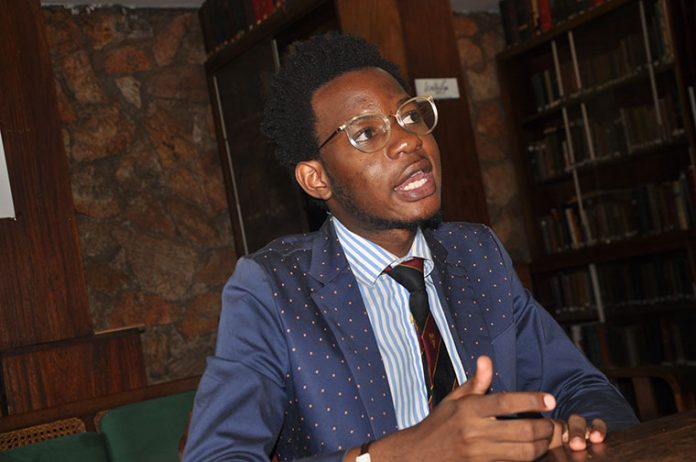
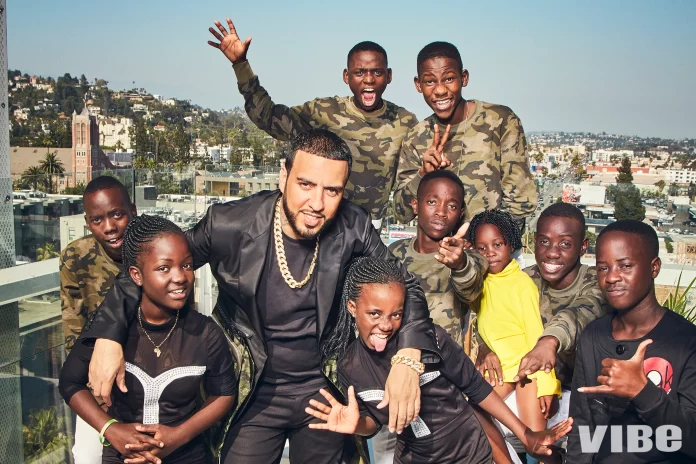
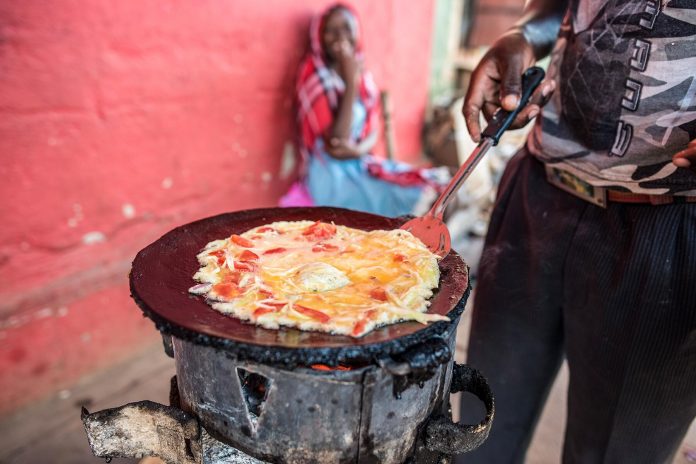




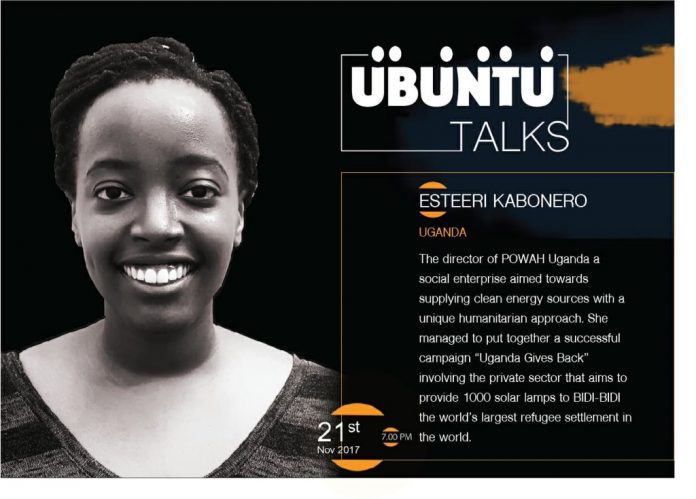
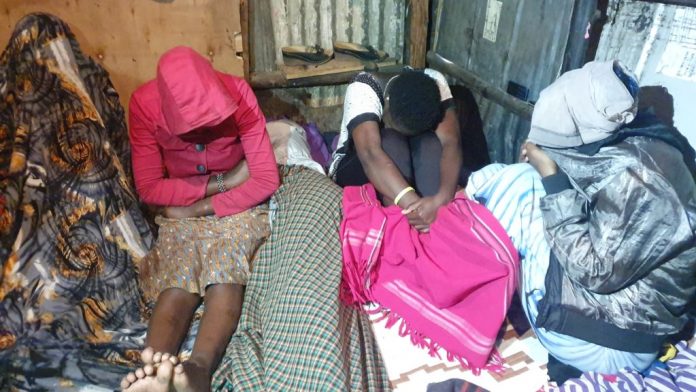
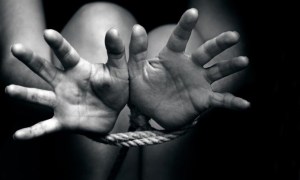 Bukedi regional police spokesperson Kamulya Sowali said the women were aged between 22 and 28 and came from Kampala and Wakiso, Uganda’s Daily Monitor reported on Monday.
Bukedi regional police spokesperson Kamulya Sowali said the women were aged between 22 and 28 and came from Kampala and Wakiso, Uganda’s Daily Monitor reported on Monday.

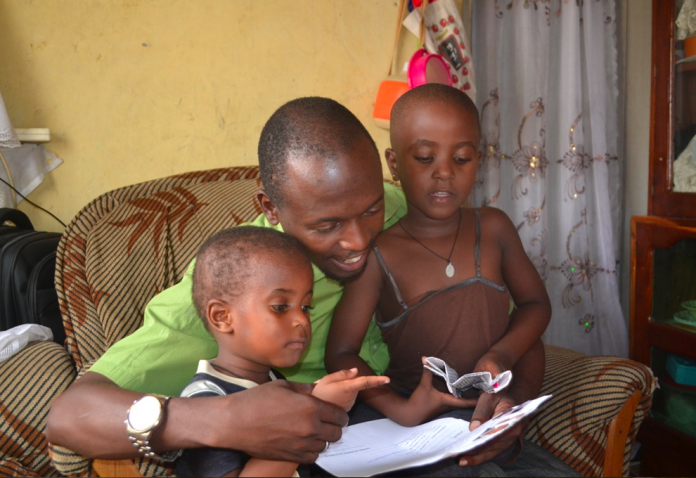
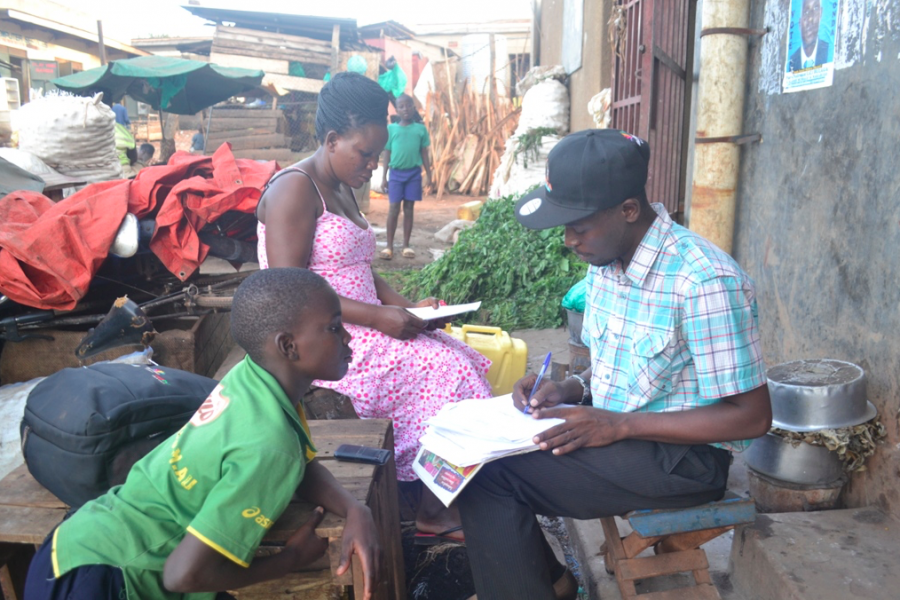 Kasule (Right) does homework with one of the children in the programme
Kasule (Right) does homework with one of the children in the programme A few months later, Mona asked Jimmy to visit one of the children her organization sponsored, Chrispus, at his school.
A few months later, Mona asked Jimmy to visit one of the children her organization sponsored, Chrispus, at his school.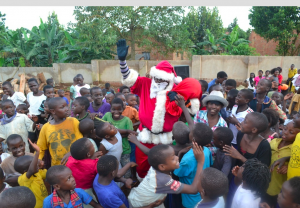 At one of the children’s Christmas parties Kasule has hosted
At one of the children’s Christmas parties Kasule has hosted
